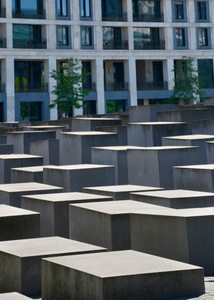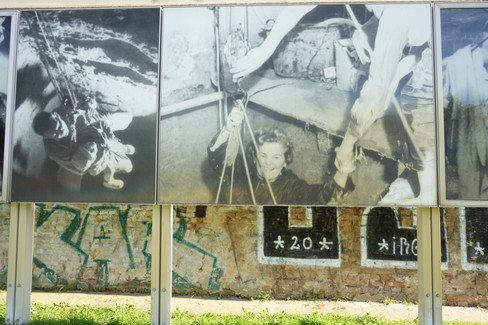BERLIN: CITY WALK
- chuckmeltzer
- Jul 14
- 2 min read
Updated: Aug 26
Today, we spent 7 hours exploring Berlin with our guide Aaron, originally from Great Britain, who moved here after meeting his wife, calling himself a "love refugee." Aaron, educated as an archaeologist, has a clear passion for history. Strolling through Berlin with him was enjoyable, as he was a rather cheeky fellow, always entertaining and a walking encyclopedia on everything Berlin, both past and present. We began at the iconic Brandenburg Gate and concluded our day at the Berlin Wall, with many sights in between.

The Memorial to the Murdered Jews of Europe is profoundly impactful and challenging to describe without a video, but I'll attempt to do so. It features 2,711 concrete slabs over a two-acre sloping site. As you walk through the grid, the slope may lead you downward while the slabs increase in height, which enhances the solemnity akin to grave markers, encouraging a private meditation walk despite the presence of many others navigating the rows. The interplay of light and shadows created by the slabs adds to its haunting beauty. Like other memorials, such as the 9/11 Memorial at the Twin Towers site and the Vietnam Memorial in Washington DC, I believe the architect successfully achieved the goal of honoring the millions who were murdered and should never be forgotten.
A more understated reminder of the war's impact and the numerous murdered Jews are the small 4-inch square brass plaques known as stumble stones. These are set into the cobblestone sidewalks, bearing the names of Jewish residents who once lived at those addresses, along with information about when they might have been deported to a camp, which camp, and if they perished, the year of their death.

We strolled from the memorial to a site where Hitler's last bunker was located. This bunker was a fortress constructed several meters underground, reinforced with tons of steel and concrete. After the war, it was deemed easier to fill it in than to attempt demolition. We did not encounter any neo-Nazis honoring their Fuhrer's site here or anywhere else in Berlin. The city seemed to focus on a populace that has evidently lived with the shame of their past and has been working towards reconciliation and redemption without altering history.
The Berlin Wall, or what remains of it, represents a complex chapter in Berlin's history. For many Berliners who grew up in the East and now reside in the West, it serves as a daily reminder. Some still feel there are two cities, despite the absence of a physical barrier. We rarely consider those who were desperate to reach the West, with many losing their lives attempting to cross the "death zone" between the inner and outer walls of the Berlin Wall. We visited Checkpoint Charlie, where those who succeeded in crossing often became subjects of iconic Cold War films.





























Comments